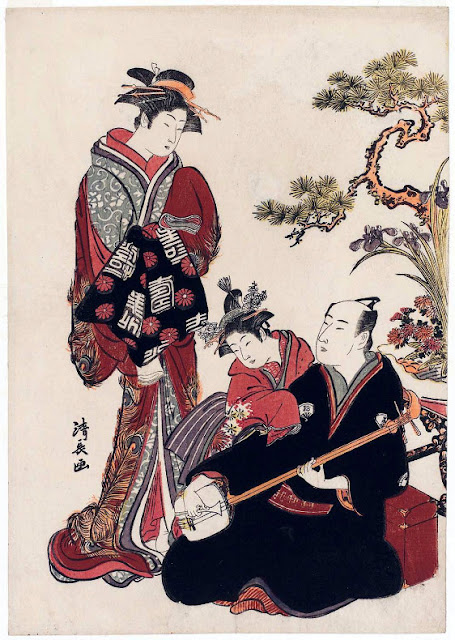 |
| Utamaro II: Benzaiten Playing Lute |
Kitagawa Utamaro II, (1753?-1831?) first called himself Koikawa Shunsho, but adopted the name Kitagawa Utamaro II when his teacher, the first Utamaro, died. He also married his teacher's widow.
Utamaro II continued to create prints in the style of his predecessor, and even signed them in the same way. Today it is impossible to say with certainty where the first Utamaro ends and the second starts.
I like this little black and white print by Utamaro II, Benzaiten Playing Lute. Colour would just be a distraction from the graceful lines.
The musical instrument is a biwa, a traditional Japanese lute, commonly associated with Benzaiten, the goddess of music.





